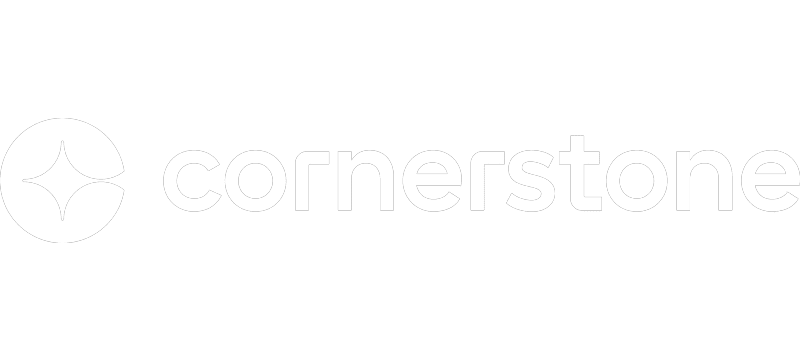Open architecture talent insights: Source, build and align for the business of tomorrow
Talent, rightly so, is top of mind. In fact, due to changes and challenges to many stages of the talent lifecycle— sourcing, attraction, retention, upskilling, career-building, and needing to give individuals the tools to be able to stand up to tomorrow’s business challenges — talent is now the number for fixation for many organizations.
Why You Should Care
Ongoing difficulties with accessing talent and a changeable outlook mean businesses need to change their approach to getting skills.
As a result, many are looking at changing their approach to learning, talent acquisition, and retention.
HR often has innovative ideas when it comes to how learning, skills, data, and the talent piece all link — but it must get buy-in!
As a result, many HR, L&D, and talent acquisition teams are taking reformed approaches to how they try to acquire, build, and keep talent for the long term — all done in order to keep a competitive edge. With change now the constant, many are now experimenting with exploring their responsibility to skills building outside of their organization, skills taxonomies, changing employer value propositions, open skills architectures, comprehensive data, and upskilling their own understanding when it comes to the skills piece.
So, this Cornerstone OnDemand roundtable discussion was a testament to all the different considerations, avenues, and new opportunities that come out of reconceptualizing traditional talent and skills paradigms
Be proactive not reactive — and remember to support!
With businesses needing skills both now and in the future, one attendee kicked off the roundtable by stipulating that organizations can no longer be reactive when it comes to skills. For them, businesses have to get deeper relationships with their talent pools, such as creating good links with universities, to see what skills new-gen talent has and what that means for the direction their business might go in the future. As one attendee recounted a talent leader saying: “If I waited [until the skills were in my organization], I’d miss the market opportunity.”
Many agreed that getting better relationships with talent pools was crucial to getting the skills presently needed and understanding the future skills landscape. In fact, as one attendee described, it resulted in their organization even helping universities shape their courses to get that talent ready for work. Others had partnerships with universities, offering students gig work, in order to allow both sides to assess if they were the right fit.
Yet, it can’t just be a focus on widening and deepening talent pools. Others noted that changes to products and values — for example, in many industries products, customers and talent are all becoming more environmentally conscious — mean businesses have to think about the skills needed to satisfy the market as well as what an enticing EVP looks like as well.
It’s a change such as this that was a preoccupation of the roundtable. One person noted that with the ongoing transformation the norm, to better understand the skills they needed they had to use external skills benchmarking to understand what they needed and then use this to create internal academies to help with upskilling, often turning to external vendors who were better placed to offer expertise in this area. This is because, as another practitioner said, the pace of change is so fast that understanding needed skills often requires expert help, especially with learning.
The role of data in understanding skills and learning
Another attendee talked about the role that good data has here. If the market is in constant flux, and needed skills are changing all the time, getting data on what skills and proficiencies a business holds and what it needs is key. Data, they argued, could then also allow businesses to connect an understanding of skills to learning content and business needs, too.
However, just acquiring data on what skills a business has, how learning is performing, and what skills it might need isn’t the end. Combining this data — bringing learning data, engagement data, and performance data — into one space is key. As is making that data accessible and easy to understand in order to create insights.
This approach, another attendee argued, could then allow understanding of how skills (what skills a business has, what learning is being done, where skills gaps exist) are affecting the business performance. It could also show how learning and skills intersect, how multi-pronged social learning networks in an organization are, and how learning is being consumed. Not only that, it can give insight into how mature an organization is when it comes to the skills piece, showcasing where in an organization capability is high and learning is working; a key step in replicating it elsewhere. It is the data that can also then lead to investment from leaders, which many agreed is difficult.
The conversation also turned to some of the challenges the skills agenda faces. Getting buy-in is hard, as is showcasing to employees where their next opportunities exist within the company. Even if attendees did understand that improving access to new roles within a company — by giving them the skills to go for it and by improving the visibility of roles — is a key part of good retention. And even if there was general consensus that good learning improves this and allows people to be transferable across the business.
As a result, it seemed that a skills confidence and skills divide gap remains, whereby struggling companies seem set to lose out more as they often, if they’re already struggling, don’t want to invest in skills which, ironically, makes it even more likely they’ll lose these skills to competitors.
As attendees stated, it was during these moments that good learning could become even more critical. As such, the discussion turned to what good learning — a crucial step in the journey to getting good skills — looked like. It could be academy based, said one attendee, it could involve prizes, and it must be engaging and interactive. It also must fit into whatever skills paradigm an organization is using, which can be difficult, especially with so much change.
Yet, another way of solving this is by hiring people that can be flexible and agile, and are willing to learn new skills. Here, HR and L&D can help by helping organizations where cost efficiencies elsewhere can be found to invest in skills and in people. They can also help formulate more comprehensive talent ecosystems and good people analytics practices and help foster cultures whereby skills are the centerpiece and leaders are encouraged to share and mentor and where learning events are great social occasions and also drive great employee experiences.
And, as one attendee added, this is all of critical importance so HR must get started (on the learning, data, and skills piece) as “the talent agenda is what’s going to dominate future business success.”
WHY JOIN AN UNLEASH ROUNDTABLE?
Amid the current disruption, HR leaders need to get ahead of the exponential trend where work, technology, and how work gets done have changed forever. But how should we approach the relevant questions, given the radical uncertainty we continue to face as the pandemic becomes more protracted than anyone imagined? Our exclusive Virtual Roundtables are designed to explore where business leaders are focused now, key challenges and prioritization for the rest of the year, and what matters most in planning for what’s next.
Check out our upcoming events here: HR Roundtables
Sign up to the UNLEASH Newsletter
Get the Editor’s picks of the week delivered straight to your inbox!

Multiple award-winning journalist, editor and content strategist
Dan is an award-winning HR journalist and editor with over five years experience in the HR space.

